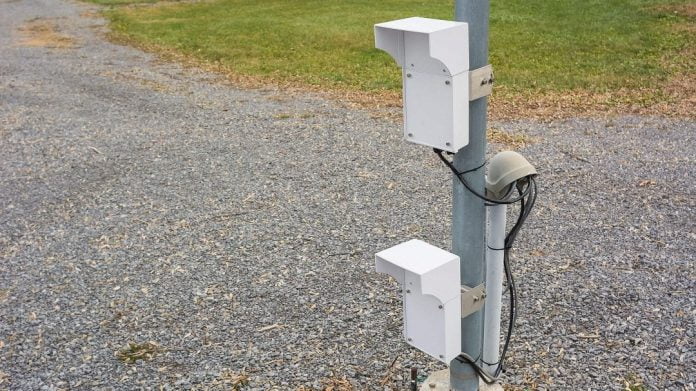When you’re thinking about protecting long perimeters with electronic security sensors, the choices generally come down to microwave versus active infrared. While the selection may be governed by budget, or by the skill level of an integration team, there will be applications that benefit from one or the other of these 2 highly evolved technologies.
Firstly, active infrared range is less than microwave and the width of infrared zones is narrower. This can be a double-edged sword. Because of their beam width, microwave is not suited to busy areas, nor to perimeters with adjacent pathways or roads. Further, typical high security applications of microwave incorporate an external and an inner fence installed to contain the microwave field and ensure it’s not accidentally blocked or activated. Such applications are easier in major industrial utilities in prisons and defence applications, but this additional infrastructure adds to cost.
When compared to microwave, active infrared will be affected more by its environment – for instance, rain, fog, dust or smoke, however, the latest beams are superior to past technologies. At the same time, active infrared stacks are typically superior when it comes to detecting approach by intruders keeping low to the ground. Another advantage of infrared is cost – it’s significantly less expensive – while its compact hardware makes it less obtrusive, as well as being easier to install in custom applications, like roof protection.
Meanwhile, the advantages of microwave include long range, low energy use, detection zone sizes that are very difficult to jump or climb over, and a beam shape that allows microwave sensors to provide protection of the approaches to a perimeter by detecting movement outside or inside a fence line. Microwave is extremely difficult to mask, and is more sensitive, then infrared, while microwave wavelengths have greater penetration of obstacles then infrared.
In terms of disadvantages microwave is line of sight which can make covering rough ground more difficult when protecting complex perimeters. Simple straight runs are also to be preferred, given the expense of hardware. Microwaves are also impacted on by reflections from metallic structures or from adjacent bodies of water, especially if these are in motion.
As well as being more sensitive than active infrared, microwave is also less stable and is susceptible to detecting moving pedestrians or moving vehicles if the detection zones are not well planned. With microware, it’s always important to ensure that devices are installed in such a way that excessive beam spread is prevented.
Same as active infrared, microwave needs to be installed in a way that ensures detection zones are not impacted on by shrubs, tall grass or trees, which means regular maintenance such as trimming and mowing will be required, adding to the cost.
#sen.news #SEN #SENnews #security #electronics









